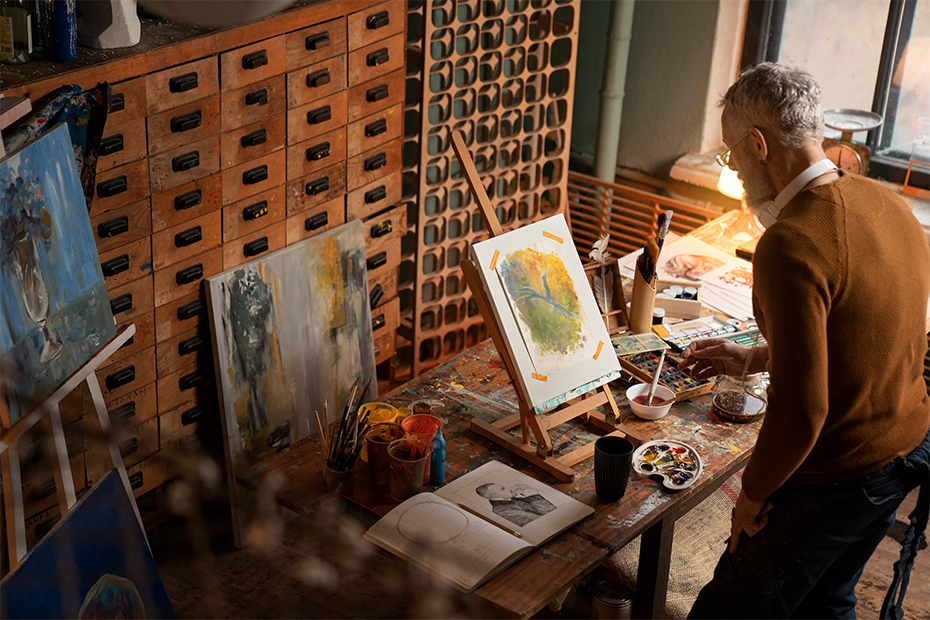What is Vieunite’s Innovative Approach to Empower Artists and Art Enthusiasts?
In a world where art is widely celebrated as an integral part of human expression and well-being, a disheartening reality persists: artists struggle to make a living from their craft. Recent reports have shed light on the stark disparity between the immense value attributed to art and the meagre earnings of artists themselves. This issue is not confined to a specific country; it permeates the global art landscape.
According to a study published by The Artists Information Company, artists in the United Kingdom earn significantly below the minimum wage, with a median hourly rate of a mere £2.60. Similarly, in the United States, 75% of artists make less than $10,000 annually, and nearly half earn no more than $5,000 from their artistic pursuits1. These figures paint a distressing picture of the financial challenges artists face.
However, it would be a mistake to assume that there is no money in art. Recent art market successes have demonstrated the extraordinary potential for artists to earn substantial sums. In 2022 alone, the works of Andy Warhol commanded an astounding $590 million in global auction revenues, while David Hockney’s creations realized nearly $174 million2. Moreover, the advent of digital art has opened new avenues, as exemplified by Beeple, a digital artist who auctioned a collection of NFT-based images for an astonishing $69 million in 20213.
The glaring inequality within the art market arises primarily from a lack of opportunity. The art world remains an exclusive domain, with large commercial galleries endorsing and promoting the work of a select few artists. Through their expertise, these galleries build compelling narratives around the artists’ creations, thereby inflating their perceived value. Trust becomes a crucial factor in the art-buying process, and galleries with established reputations hold a significant advantage. Consequently, unrepresented artists struggle to gain recognition, leading to undervaluation and limited sales. This systemic issue perpetuates the cycle of artists earning far less than they could as shelf stackers in a supermarket.
Moreover, the exclusivity of art galleries contributes to another problem: alienating potential audiences. These intimidating spaces can be as off-putting as luxury boutiques, deterring regular consumers from engaging with art. This exclusionary environment restricts the transformative power of art from reaching a wider audience, stifling its potential to enrich lives and foster emotional well-being.
Fortunately, the recognition of art’s inherent benefits has prompted government agencies and organizations to explore new avenues for engagement. In recent years, the concept of “social prescribing” has gained traction, with General Practitioners (GPs) prescribing arts activities to address issues such as loneliness and poor mental health4. The intersection of art and well-being has garnered significant interest, leading to increased investment in initiatives that leverage the therapeutic potential of creative expression.
One innovative platform aiming to address these challenges head-on is Vieunite. By displaying a Textura canvas in your home, you gain access to a vast library of world-class art, seamlessly bringing art directly into your life. Additionally, purchasing a license to showcase an artist’s work on your screen ensures that 90% of the profit from the sale price goes directly to the artist—a stark contrast to the industry norm of 50% or even 40%. Vieunite’s transformative economic model empowers both artists and viewers, bridging the gap between art’s intrinsic value and the artists’ financial reality.
Vieunite’s mission is to revolutionize the art world, making it more inclusive and equitable for everyone involved. By championing artists’ economic well-being and offering art enthusiasts unparalleled access to captivating creations, Vieunite sets a new standard.

Benedict is Vieunite’s Cultural Director and a lecturer at Nottingham Trent University.
